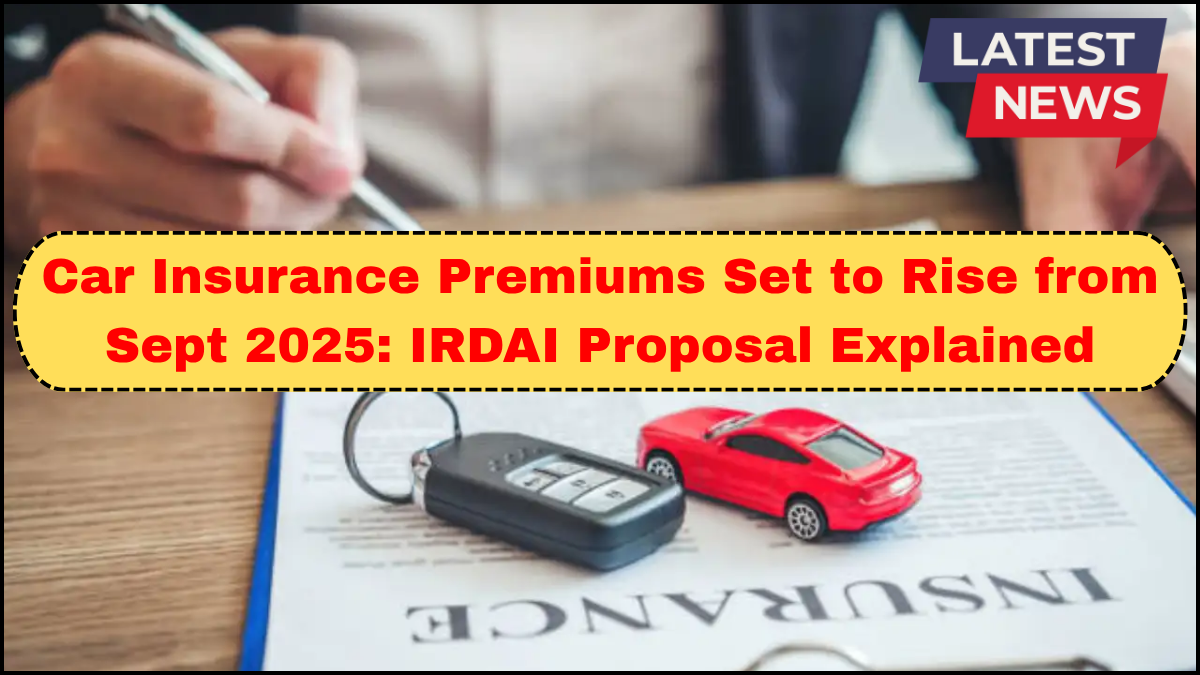Starting September 2025, vehicle owners in India may face steeper costs for insuring their cars, thanks to a proposed revision by the Insurance Regulatory and Development Authority of India (IRDAI). This car insurance price hike in India stems from a comprehensive review of current motor insurance pricing structures and risk assessment models.

Here’s a closer look at what’s changing, why it matters, and how it could impact both new and existing vehicle owners.
What Triggered the Upcoming Car Insurance Price Hike in India?
IRDAI, the nation’s insurance regulatory body, periodically reviews premium rates for third-party motor insurance, which is mandatory for all vehicles in India. The latest IRDAI motor premium update comes after an extensive analysis of claim ratios, road accident data, inflation trends, and overall loss experience of insurers.
Key factors driving the premium increase include:
-
A surge in road accidents and fatalities.
-
Increased cost of vehicle repairs and spare parts.
-
Rising medical expenses associated with personal accident claims.
-
Inflationary pressures impacting operational costs for insurers.
According to IRDAI, the goal is to ensure financial sustainability for insurance providers while maintaining fair pricing for policyholders.
Who Will Be Affected?
The proposed car insurance price hike in India will primarily impact:
-
Private car owners: Especially those with older models or larger engine capacities.
-
Commercial vehicle operators: Including taxis, delivery vans, and trucks.
-
Two-wheeler owners: Though modest, a premium hike is expected across engine categories.
-
Electric vehicle users: EVs may see revised premiums based on battery capacity and repair costs.
Notably, the hike is currently focused on third-party motor insurance, which covers liability for injury or property damage to others. Comprehensive plans, which include own-damage cover, may also see adjustments as insurers realign pricing models to match risk exposure.
Breakdown of the IRDAI Motor Premium Update
While the final approved rates will be notified closer to the implementation date, the draft proposal outlines expected percentage increases across segments. For instance:
-
Cars with engine capacity below 1,000cc could see a 5-8% hike.
-
Mid-segment vehicles (1,000cc–1,500cc) may face a 10-12% increase.
-
SUVs and luxury cars above 1,500cc may see premiums rise by up to 15%.
-
Two-wheelers in the 150cc–350cc range could see a 6-10% jump.
IRDAI’s proposal also includes the possibility of usage-based pricing models, where premiums could vary based on vehicle usage, driving behavior, and telematics data. This shift may encourage safer driving and incentivize lower-risk behaviors.
How Consumers Can Prepare
While the increase is not immediate, it’s important for vehicle owners to prepare:
-
Renew Early: If your policy is up for renewal before September 2025, consider renewing for a longer tenure at current rates.
-
Compare Plans: Use aggregator platforms to find the most cost-effective comprehensive policies.
-
Opt for Voluntary Deductibles: Taking on a higher deductible can reduce your premium.
-
Use Telematics: If insurers offer telematics-based discounts, install the device and drive responsibly.
Industry Reactions and Implications
Insurers have welcomed the IRDAI proposal, citing better alignment of premiums with actual risk profiles. Industry analysts suggest this could enhance competition among insurers, especially those with better claims experience and customer service.
However, consumer advocacy groups warn that frequent hikes could make compliance harder for low-income vehicle owners, especially in rural areas. There are calls for introducing tiered premiums or offering subsidies for economically weaker sections.
FAQs
Q1. Why is IRDAI increasing car insurance premiums in India?
IRDAI is adjusting premiums based on rising accident claims, repair costs, and inflationary trends. The aim is to maintain a healthy balance between insurer solvency and fair pricing for consumers.
Q2. Will this impact only third-party insurance?
Initially, yes. The focus is on third-party insurance, which is mandatory. However, comprehensive policies could also be re-priced based on overall risk and market trends.
Q3. Can I lock in my current premium before the hike?
Yes. If your renewal is due before September 2025, you can renew early and lock in the existing rates for up to three years for third-party policies.
Q4. Are electric vehicles also affected?
EVs will be impacted based on their motor output and battery capacity. However, they may still enjoy certain government-backed incentives or discounts.
Q5. How often does IRDAI revise motor insurance premiums?
Typically, IRDAI reviews motor premiums annually, though changes are not guaranteed every year. Revisions are based on market data, insurer performance, and risk trends.
click here to learn more



